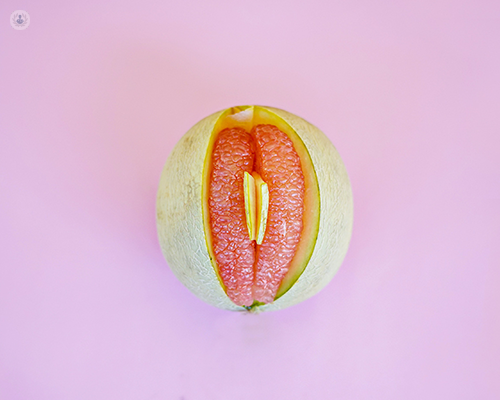Surgery for the vaginal labia explained
Escrito por:Women who have a large or uneven labia minora may choose to reduce its size and correct its symmetry through a labiaplasty, a common genital plastic surgery.
Mr Muhammad Javaid, leading consultant plastic surgeon, provides a comprehensive overview of the procedure, explaining the growing demand for labiaplasty, sex after labiaplasty and feeling in the labia after labiaplasty.

Is the demand for labiaplasty procedures growing? If so, why?
The demand for labiaplasty is growing and I think it is steadily growing after seeing it over the last few years and months as well. I feel it is because of the increased awareness people have about themselves in today’s contemporary lifestyle and body image awareness. These are the main factors, I feel, that are causing the increased demand.
In addition, psychological and physical symptoms determine whether labiaplasty is a medical necessity or not. There are many cases where labiaplasty is a medical necessity because of a patient’s physical symptoms, like having a large labia – (labiaplasty is broadly considered to be a labia reduction or a labia minora reduction request.) When patients have a large size of labia minora that is protruding out, it can rub against tight clothes, jeans or undergarments. It can also interfere with physical activities such as gym activities, cycling or horse riding. These are the physical aspect of having symptoms or a medical need for a labiaplasty.
As well as social and physical factors, a large labia minora can also interfere in a patient’s sexual activity and have a psychological impact on their self-confidence. In some occasions, some patients will come to me complaining that they have issues with the maintenance of their hygiene, due to the extra tissue creating folds and trapping secretion and sweat.
There are various aspects for the increase in demand and the reasons for the request of labiaplasty.
Can labiaplasty be medically necessary? What impact does it have on patients?
Labiaplasty is medically necessary in many patients who request this surgery purely on medical grounds, such as having a large labia size that rubs against tight clothes, interferes with jeans or in physical activities.
Socially, sometimes people will be reluctant to put swimwear when they go swimming, because a large labia shows through certain clothes. Interfering with sexual activity, undermining self-confidence and issues with hygiene maintenance are the main medical reasons for people requesting a labiaplasty surgery.
One aspect of the appearance of labiaplasty concerns asymmetry, where sometimes people have asymmetry in their labia and that creates a sense of abnormality. To regain that normality and symmetry, people can request labiaplasty surgery.
However, in other instances, there are physical symptoms as well and people will want this type of surgery purely for the relieve of physical symptoms. In fact, the majority of patients in my practice who seek this surgery, present physical symptoms.
Following the operation, patients are generally very happy, because they can enjoy normal activities without being self-conscious about themselves. They can wear tight clothes, swimwear and go to the swimming pool without worrying about body parts accessibly showing through and undermining their self-confidence.
It’s not only the improvement of physical symptoms, but also about regaining their self-confidence, which has a huge impact on people's lives and their level of comfort with themselves going out in their daily lives, enjoying rather than being self-conscious.
Do patients choose their own labia appearance?
In my practice, the main reason why a labiaplasty is performed is to re-establish normality. During the consultation with the patients, I - in conjunction with the patient - identify what the issue is, where the abnormality is and I explain what is a normal appearance of the labia, which is broader in the upper part and smaller as it goes down.
The aim is to re-establish the normal appearance and, within this objective, if there is a slight adjustment the patient is keen to have, then I also do that. In a way, it's a joint decision between a surgeon and the patient.
Is local or general anaesthetic used for labiaplasty?
Labiaplasty can be performed in both ways, but I must say that the majority of my labiaplasties are done with local anaesthetic. Some people demand general anaesthetic because they are a bit scared of needles or because they prefer being switched off. In these cases, I will use general anaesthetic, but the majority of patients are okay with local anaesthetic, which only involves around 30 seconds of the needle pain associated with local injections. All of the patients are at ease after that and the operation can be comfortably performed without any issue. At the end of the labiaplasty, when they are awake, I sometimes show them how the appearance of their labia immediately looks after surgery.
How long does labiaplasty take?
The duration of the operation varies, but on average, a labiaplasty takes between 60 to 90 minutes, approximately half an hour to 45 minutes for each side. It can be done quicker, but I think this is a surgery of precision, attention to details and precision are the things which are my main priority when I do this surgery. I'm not looking at the clock when I do the surgery; my entire focus is to achieve the best possible shape, appearance and outcome for the patient.
How is a labiaplasty performed?
A labiaplasty is performed depending on whether the patient wants general anaesthetic or local anaesthetic. In the consultation prior to surgery, it is established where the abnormality is and what needs to be removed. This is agreed with the patient and the redundant tissue that protrudes out causing a problem, is marked.
Standard preparation and dripping are done to make sure the surgery is carried out in the best hygienic and antiseptic way. After marking, the redundant excessive tissue is injected so that the patient is numb. The redundant tissue is then removed and stitches are applied (some are internal stitches and others are outside stitches.) I personally use dissolvable stitches, so that it's more comfortable for patients and there is no inconvenience for the removal of stitches, because the stitches get dissolved over the coming one to two weeks. After these stitches, antiseptic ointment is applied.
Patients are then given a soft maternity pad, which is tucked in the undergarments as well as postoperative analgesia and antibiotics. I instruct them to wear loose clothes and give them general instructions for their hygiene for that one week, which is to take rest and have very light physical activities in loose clothes, letting the wound heal in the best possible way.
What is the cost of labiaplasty based on?
There are variable factors. The cost is based on whether the patient needs general anaesthetic or local anaesthetic, what sort of facility the surgery is being performed at (a clinic or a big hospital set up), the operating time, the instruments required and the expertise.
With these factors taken into account, the cost rate is between £2,500 to £4,000 depending on the requirement.
When are the full results visible?
With a labiaplasty, immediate results are visible soon after the surgery, because when I finish the operation, the patient can immediately see the improvement and appreciate the difference. That is the happy start of the recouping or recovery journey.
For the first week, patients can experience swelling and bruising that gets worse after 72 hours, but this is nothing to worry about. Once patients know what to expect, it is a smooth recovery. When I see patients in six weeks’ or eight weeks’ time, most of the swelling has settled and the result is visible.
I would say three months is a good safe period in which the final result is evident and permanent.
Will patients lose feeling in their labia after labiaplasty?
In my experience, I have not yet seen patients losing sensation, because if you're not interfering with the remaining tissue, there should be no issue with losing sensations. Along the scar, there will be temporary numbness and patients will have a painful tender scar for a period of time. However, sensation will remain fine for most of the patients. I haven’t yet come across any patient who has lost sensation.
How long should women wait to have sex after labiaplasty?
It is important that the tissues are given enough time to heal without interference. Patients should wait until the swelling, bruising, tenderness and pain settles. Although tissue heals quickly after labiaplasty - after one week most of the healing completes - it is still fragile.
My general instruction is to wait at least six weeks because any interference with tissue that is still swollen, fragile and tender, is going to be a very painful experience with the potential of causing damage near the operated area. Patients should see for themselves, listen to their body and feel if they are pain-free, comfortable, or have almost forgotten they had surgery.
I also ask them to be mindful and initially be extra cautious, making sure there is no excessive rubbing and there is a good lubrication. Patients are advised to have gentle first few encounters to ensure that the tissues aren’t unnecessarily hurt.
Mr Muhammad Javaid is a leading consultant plastic surgeon who specialises in all aspects of plastic and cosmetic surgery, including genital surgery. If you’re considering a labiaplasty and would like to know more about the procedure, visit Mr Javaid’s Top Doctors profile today.


